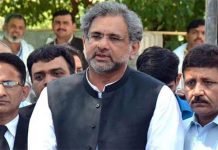The State Bank of Pakistan says that Rs14.9 trillion have been added, the polar opposite of Pakistan Tehreek e Insaf’s election promises of reducing the burden. The alarming swell in the public debt took only 3-years. In comparison, the current public debt stands at 140% of the total debt the previous government of Pakistan Muslim League-Nawaz PML-N government acquired during its full tenure of five years. The debt stood at Rs39.9 trillion in June 2021, which means a monstrous 60% increase in the public debt between July 2018 and June 2021. The 20% increase on average each year is quite obviously unsustainable.
The SBP says that the total public debt stands at 83.5% of the gross domestic product (GDP) with the fresh addition from the fiscal year 2018-19 to 2020-21. As far as the size of the economy is concerned, the ratio is 4.1% lesser than the past fiscal year 2019-20. The public debt remains higher by 11% of GDP than the ratio the PML-N government left behind. The State Bank report underlines the increase in average daily increase in the public debt under the PTI government, which has spiked up to Rs13.6 billion per day from the daily average addition of Rs5.8 billion by the PML-N government, an over twofold increase.
A couple of weeks ago, Governor of State Bank of Pakistan Reza Baqir said that Pakistan’s foreign exchange reserves were poised to hit the historic highest level of around $20.7 billion after receiving $2.77 billion from the International Monetary Fund that was scheduled to arrive in late August. Previously, Pakistan had recorded its highest ever reserves in October 2016 at $19.5 billion. Baqir said the boost in foreign exchange reserves will help the economy with a climbing import bill.
The mounting external and internal debt is untenable as it put the economy at risk and may consequentially affect the country’s foreign policy. While the government should be praised for maintaining a relatively low current account deficit of 0.6 percent of GDP in FY21. The low current account deficit means that increase in the external debt has been nominal during the two-year period where the domestic debt has gone up by 26.7 percent.
The first angle worthy of a discussion here is that the obsession with maintaining the macroeconomic indicators rarely translates into ostensible relief for the layman as inflation continues to cripple the small businesses and salaried individuals. The federal government need to formulate and implement medium- and long-term policies that may break the long-running trend of dependence on IMF and the World Bank to bolster the country’s foreign exchange reserves.
The second point partially absolves the government. It would be dishonest to not concede that the return of the artificial exchange rate to its realistic position has tied the government’s hands as a substantial part of the public debt can be attributed to this phenomenon. The power sector’s circular debt is another issue that is one of the largest contributors to the rising public debt. Government should prioritise stopping the spiralling debt.
Earlier today, Prime Minister Imran Khan expressed confidence in the Federal Board of Revenue to ‘comfortably’ achieve its annual tax collection target of Rs5,829 billion. He said that the FBR has already collected Rs850 billion during the first two months of the current fiscal year, exceeding its own target by 23%.
This is a step in the right direction: expansion of the tax base.









